The Crest and The Tower each bring their own touch to the city’s cultural life, but after the pandemic, one is struggling with its future
By Andrew Westrope
One of the first landmarks that greets visitors entering Sacramento on I-80 Business from the south, particularly at night, is a 100-foot glowing spire of neon red and green. It was there before much of the skyline on the other side of the freeway, and before the freeway, too.
When that spire was built, the United States was climbing out of the Great Depression, civil infrastructure projects such as the Tower Bridge were remaking the bones of the city, area farmers were struggling and people craved entertainment. Most Americans, even if they didn’t have two nickels to rub together, found it at “the pictures” — at the Hippodrome theatre (now the Crest Theatre) on K Street, the Alhambra, the New Oak Park Theater and beneath that spire, at the Tower Theatre on Broadway.
Now 15 years shy of its centennial, the spire is outwardly unchanged, but its business is as different as the skyline back then. Consumers have more screens competing for their attention than all previous generations had combined. A movie ticket is $10 on the low end. And custom-built movie palaces, once projecting films for the masses on celluloid — transparent, flammable plastic that defined a cinematic era — have been edged out by look-alike multiplexes playing digital video files mostly for younger audiences.
And that was before COVID-19 cut their businesses in half. Yet market share aside, novelty has made Sacramento’s remaining movie palaces of the 20th century, the Tower and the Crest, beacons in the night for the local film scene — for cult and independent cinema, festivals, special screenings and irreplaceable connections to film history.
A screen-lit cultural hub
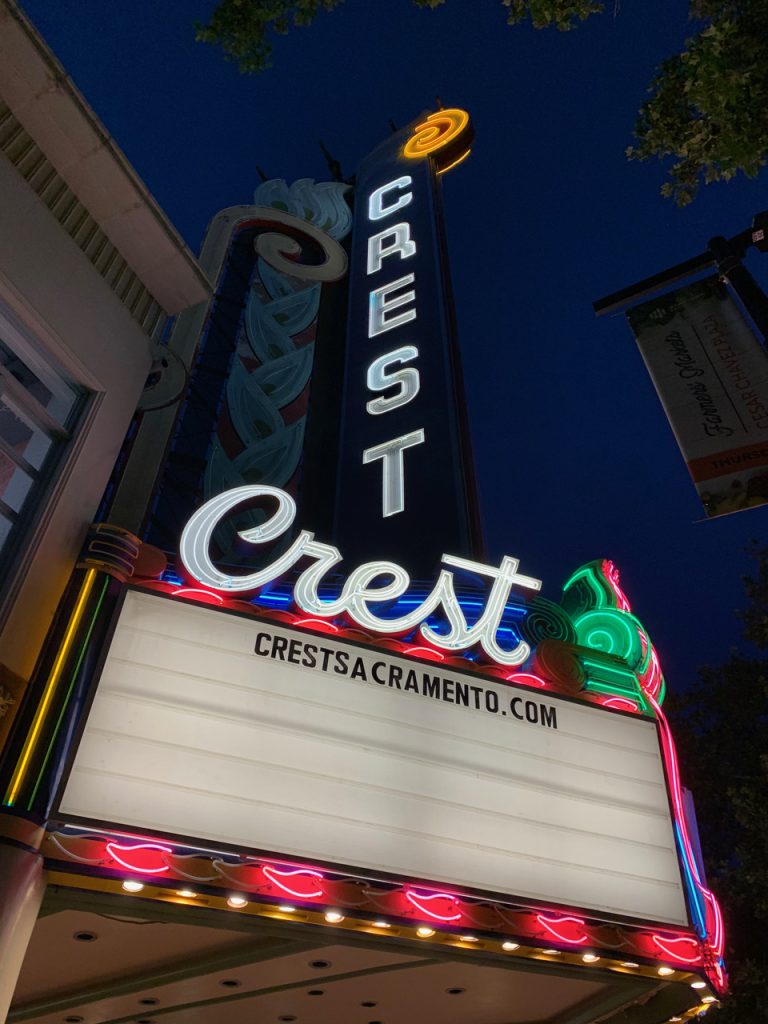
For cult classics, holiday films and local-event screenings, the Crest Theatre on K Street is the only regular big screen in town. Since taking over operations in October 2019, General Manager Robert Alvis said patrons vary depending on the movie, but he’s tried to keep a regular rotation of attractions for seniors, families, date-night couples, holiday movie-goers, and enthusiasts of the obscure and the retro.
Among the theater’s regular offerings are monthly “VHcreSt” showings on VHS, and new this year, musical Mondays for $6. Alvis said the lineup comes from him and his staff, the occasional informal audience poll and input from the Facebook group Sacramento Classic Movies.
“We have a stable of movies that we play every year. ‘Casablanca’ is going to play every year, ‘Princess Bride’ is going to play every year, because they’re always very successful, and we have our host of movies that we do every year along holiday lines,” Alvis said. “Then we have movie programs that are geared toward a specific crowd … that are off-the-wall and not your normal movie that we would play here, just as something that people aren’t going to see at any other time or any other place, like … ‘The Toxic Avenger’ or ‘The Skateboard Kid.’ We’ve done ‘Garbage Pail Kids,’ ‘Mac and Me,’ things like that.”
The Crest also accommodates the occasional local film premiere. Some of these are documentaries, but for the past couple years, the theater has hosted the J Street Film Festival twice a year where Sacramento State film students screen their class projects at the end of each semester.
“Those have become really, really big events for us, because those filmmakers are really excited to see their films on the big screen,” he said. “They bring out their friends and family, and it’s been a good thing we’re going to support as much as we can.”
Of course, the opulent art deco theater — with its massive neon sign, old-fashioned marquee, custom-tiled foyer outside, and ornate light fixtures reflecting off a gilded, sculpted ceiling — was not always a destination for students and niche audiences. The venue opened in December 1912 as the Empress Theatre, designed by architect Lee DeCamp for vaudeville attractions. It was soon rebuilt and reopened in 1918 as the Hippodrome theatre, adding film projection to its capacities starting with a Rin Tin Tin feature, “Tracked by the Police,” according to cinematreasures.org. When the marquee collapsed and killed a bystander in 1946, the theater was closed, remodeled and eventually reopened as the Crest Theatre in 1949. Subsequent renovations added basement screening rooms, and eventually replaced them with the restaurant Empress Tavern.
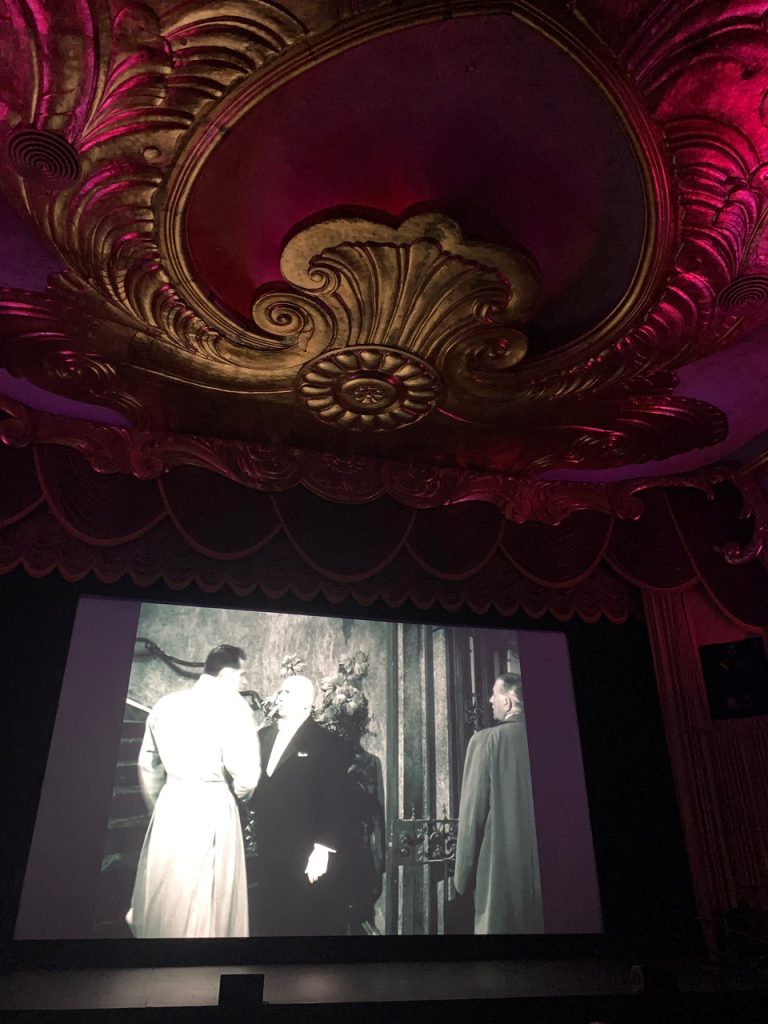
Today, the theater, owned by wastewater treatment engineer Robert Emerick and operated by Alvis and GD Theatres, Inc., has returned to its vaudeville roots — focusing on live entertainment. The Crest is open at least five nights a week and booked with concerts and comedy shows months in advance. Six weeks out, Alvis schedules the remaining slots on Wednesday through Sunday evenings with a movie projected on Blu-ray Disc or a screener from a studio.
“We have, in the past, done 35 mm, but it’s very expensive, because it costs about $400 just to ship to and from,” said Alvis. “A theater like this, we’re charging $10 a ticket, so the first 40 tickets (would) cover shipping.”
Unable to afford film and unequipped with a digital cinema package projector that could cost upward of $100,000, the Crest no longer screens new releases. Yet Alvis said he sees the historic building as a “cultural hub,” a venue for reliving or passing down personal cinematic experiences that aren’t playing in multiplexes, and that’s how his customers seem to receive it.
“When we did ‘Die Hard’ here in December and old Hans gets tossed off the building, there you have 350 people cheering. You don’t get that anywhere else, and it does add to the event for sure,” he said. “I think us continuing to play those movies, to make sure that they’re out there, to try to give them to not just people who have seen them a million times but to new audiences as well, can only be a benefit to everyone, to the downtown, to the city. Because when these places go out of business, they don’t generally reopen. … They either sit empty or they get torn to the ground, and we obviously don’t want that to ever happen here, because you do lose something that is very special, and what I would say necessary for a thriving city.”
‘The last bastion’ of cinema on Broadway
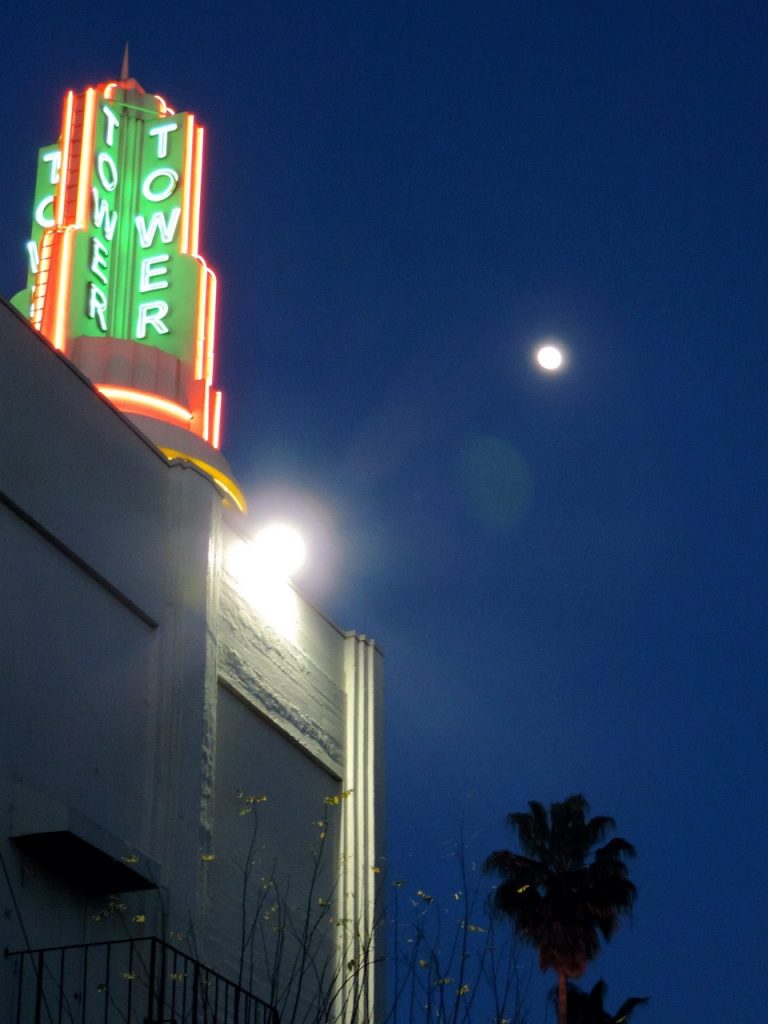
Before it was remodeled and split into a three-screen arthouse theater in 1974, the Tower Theatre was a single auditorium for mainstream features, unobstructed by the jungly garden of a neighboring business that hides its marquee today. It was designed by California architect William B. David in the streamline moderne style and built on the former site of a city dump, along the busy thoroughfare of Y Street, which was renamed Broadway for the theater’s opening in 1938.
Since switching its focus in the late 1970s to foreign and independent films coming out of the festival circuit, the Tower’s brand has been about quality over quantity. When international or acclaimed filmmakers working with smaller budgets have a new movie coming out — think Terrence Malick, Claire Denis, Yórgos Lánthimos or Sacramento’s own Greta Gerwig — it’s likely to play at Tower, and may not play anywhere else in town.
In addition to its attention to selection, picture and sound quality, the Tower is also known for being the only local venue that can project 5-perf 70-mm film, a high-quality format used occasionally by big-name directors such as Paul Thomas Anderson or Quentin Tarantino, or for special events like the 50th anniversary screenings of “2001: A Space Odyssey.”
Yet for all its attention to the art and history of cinema, the Tower’s operators are struggling to find its place amid the tastes and habits of a changing moviegoing public.
“We’re doing a lot more rep(ertory cinema) now than we have in the past, because the audience has really changed since COVID. They’re doing a lot more streaming, and we’ve lost a big core of our audience of 30- to 40-year-olds, so we’re trying to do anything we can to get them back. Our attendance has dropped 50% since COVID,” Tower’s General Manager Dave Parker told Sacramento News & Review in June. “I’ve been here five years, and when I first got here, on Saturdays, on weekends, there were tons of people, and it’s changed so radically. So, I don’t know where we fit in, to be honest. I would hope we’re kind of like the last bastion of this kind of entertainment.”
Besides a few annual events, including the Studio Ghibli summer series and Hitchcocktober in the fall, Parker was hopeful about a few things: coming attractions from major filmmakers, a growing amount of product post-COVID and Tower’s addition of a live organist Dave Moreno, last summer.
“It’s an added-value thing — you can’t go to a multiplex and get something like that,” he said. “That’s what I’m trying to do right now. I’m trying to get things in here that you can’t get in other places, and I’m just kind of hoping that the word will spread. I believe in cycles, and I’m hoping at some point maybe things will shift back a little bit.”
Moreno is emblematic of what makes the Tower so invaluable to people like Cecile Downs, director of the local French Film Festival, who praised the theater’s openness to novelty after its first time hosting the event this year.
“It’s wonderful. The Tower, they are very welcoming to us, and we are very happy (to be here),” she said. “(Multiplexes) are not showing the same films. Where can you see ‘You Hurt My Feelings’? I don’t think you can see that in a multiplex. And again, sometimes for films that are more independent films, that are not superheroes, you don’t need this super big screen that’s kind of overwhelming. Sometimes you just need to feel more comfy. And it’s always the same people working. If you come often, you know them.”
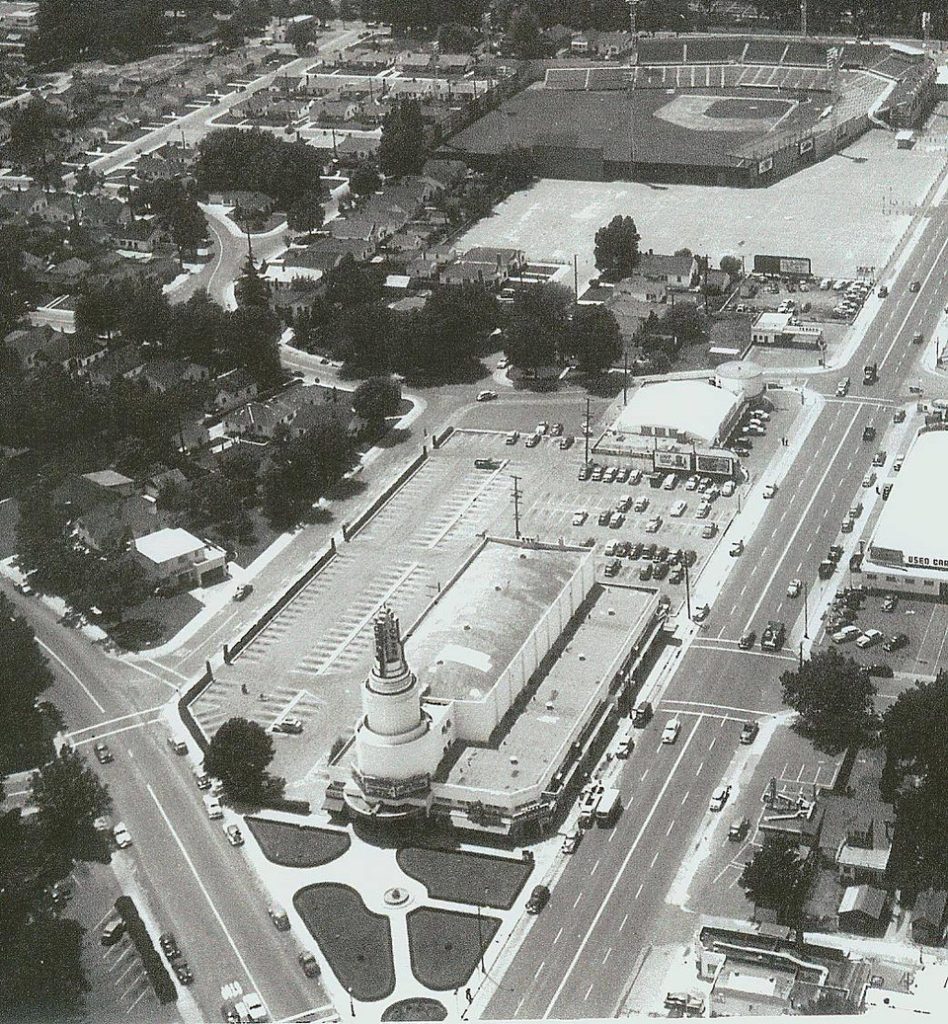
Echoing Downs’ sentiments about the difference between scale and comfort, festival-goer and West Sacramento native Sharon Hicks said she comes about a dozen times a year looking for that experience.
“I think (the Tower) fits into the crowd that appreciates a little bit of the past,” Hicks reflected. “I’m not real keen on booking my thing online, and I have to pick my seat, and I have to have my feet raised — that’s not going to the movies to me. (The Tower) is smaller and more intimate, and it’s not complicated.”
Tagging along with Hicks at the festival in June, Peg Wogksch of Sacramento said the aesthetic and convenience of the venue are the draw for her.
“There’s something about the old theaters that I love,” Wogksch observed. “Just coming in, where they have everything posted, I do like that. We went to the French Film Festival at the Crest many years ago and that was fine. The thing here is they have parking right outside, and getting out late is a concern as to why I don’t want to come downtown at night.”
‘Tower movies’
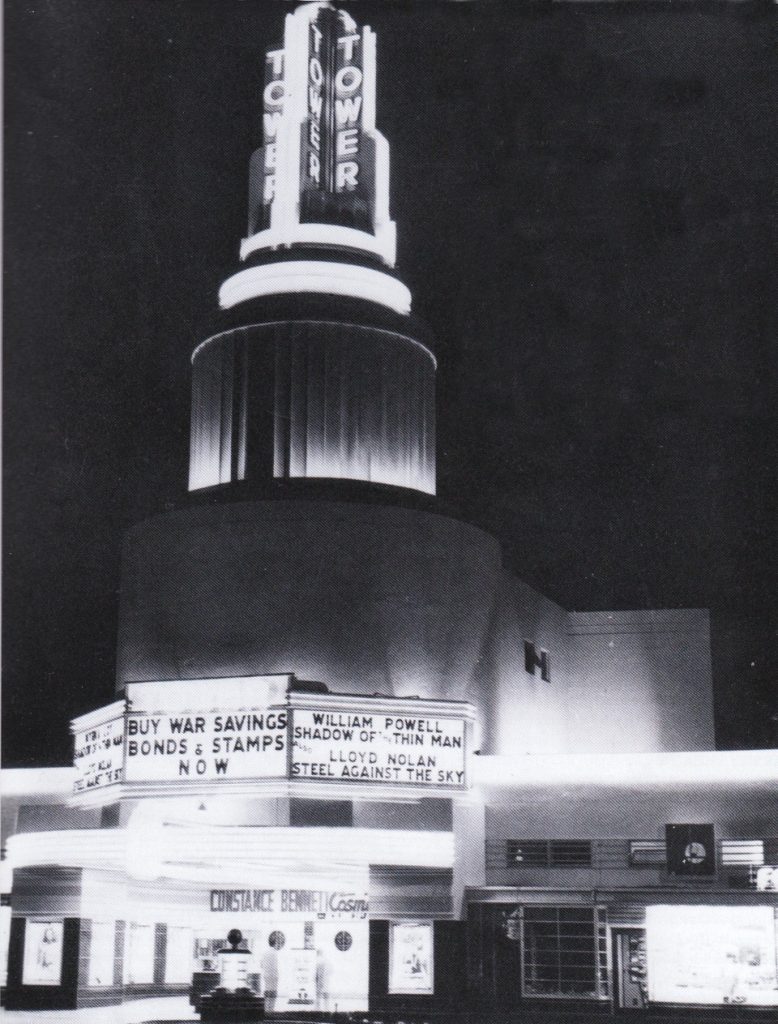
Matías Bombal, a nationally syndicated film critic who has worked in different capacities at both the Tower and the Crest in the past, said locals even refer to foreign and art films as “Tower movies.” But given the state of its business, Bombal is concerned the current tenant, Angelika, an arm of Reading Cinemas, might walk away when its lease expires in 2025. And if that happens, he doubts the proprietor will find another theater business with the resources to rent the space and show those films.
The only way theaters make money, said Bombal, is with concessions, typically leaving them a 5-10% profit margin.
“If you’ve got 13 people (in the audience) and no one is buying any food, that theater will close, and we are seeing closures of multiplexes left and right, everywhere,” Bombal pointed out. “Not a lot of new theater construction. And they make all of the new theaters like dull boxes, so they can easily be ripped apart and turned into retail. All these theater-chain operators have moved into the real estate business, because they have all this property all over the country.”
For a singular venue like the Tower Theatre that’s been operating for 85 years, it only makes sense to play the long game. The Depression-era film culture that gave birth to the theater is no more, and time will tell if future Sacramentans will rediscover the magic of cinema at old movie palaces. But those like Bombal who fell in love with one of the great art forms of the 20th century will always be drawn to that glowing spire on Broadway, for what our personal devices have supplanted but not replaced: a communal experience, a cultural tradition and a memorable night at the pictures.
“The Tower Theatre is a maker of memories, and the greatest thing show business can do is make an indelible memory for people,” Bombal said. “The movie itself can be really great, but it’s the surrounding periphery, and I think this is something lost in today’s moviegoing, and certainly with streaming, where we sit at home in sports clothes and drink our beers and watch whatever and not even pay attention — the idea that you could be so focused and dressed up, and you went out and it was a special thing. It was an event-based experience. It would make a memory for you that would last your whole life, and that’s sadly vanishing from our culture.”
This story is part of the Solving Sacramento journalism collaborative. Solving Sacramento is supported by funding from the James Irvine Foundation and Solutions Journalism Network. Our partners include California Groundbreakers, Capital Public Radio, Outword, Russian America Media, Sacramento Business Journal, Sacramento News & Review, Sacramento Observer and Univision 19.

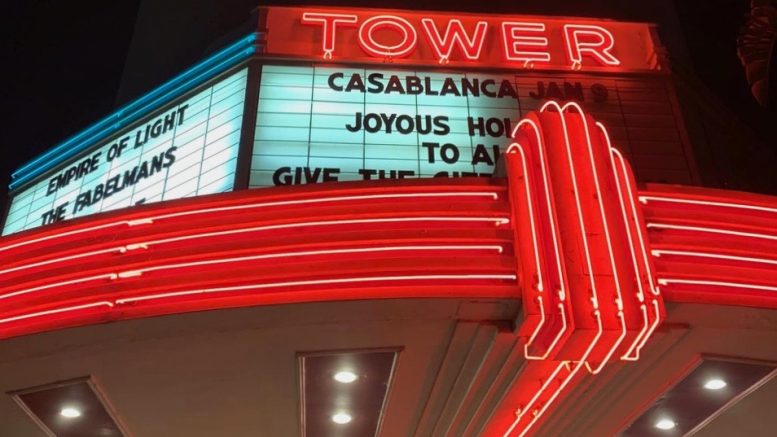
We loved both theatres when we lived in the area. I’m glad they and Matias are still alive and kicking!
I’ve been coming to the Tower ever since Goldfinger played on the huge screen in the single theater. I was disappointed when it was carved up and the big screen was no more, but I realized it was for economic survival and I accepted it. I read the 4-star reviews in the Chronicle about those small gems in San Francisco and you wondered if they would ever come to Sacratomato, and if they did they were always at the Tower Blue Is My Favorite Color is an example–an adult film for adult audiences who appreciate the European approach to sex, nudity, and other mature themes, films that actually make you think–and appreciate the art form. The Tower knew its market, and satisfied their needs, and we kept coming. Even today, hundreds of upscale people are relocating from the Bay Area…Sacramento is becoming the new Tech Destination, the downtown area has been reinvented, even the Kings made the playoffs, and those Bay Area transplants want what they had there, even those movies that never made it to Sacramento.
But when Angelika took over, everything changed. Movies I’d never heard of, that were so far out there I couldn’t even follow the plot, if there was one. No more unrated movies from Samuel Goldwyn Studios that were high class gems. No more mainstream movies that looked more independent than studio, the ones that famous stars worked for at scale because it gave them a chance to actually act. A concession stand that introduced alcohol and entrees, trying to be all things to all people, and suddenly everything was mysteriously prepared in that back room, and you couldn’t talk to the clerk and get to know each other by first name so you’d recognize each other the next time. I also came because it was the only place I could consistently find Sacramento News & Review and Outward newspapers, but now there’s no more printed N&R and Outward is hit & miss.
So I stopped going to the Tower at least 2x a month, sometimes 2x a week. I still get the weekly emails about current and upcoming films, but I can’t relate or find a connection to most of the current film agenda. The movies that used to come to the Tower now appear to be coming to Cinemark’s Cine Arts theaters. It’s not as intimate, but I still lose myself in the film, surrounded by serious filmgoers who are there for same reasons, and I leave feeling better for seeing a film based on excellent character development instead of “the end of civilization as we know it.” Get those movies back in your mix, and I’ll definitely be back.